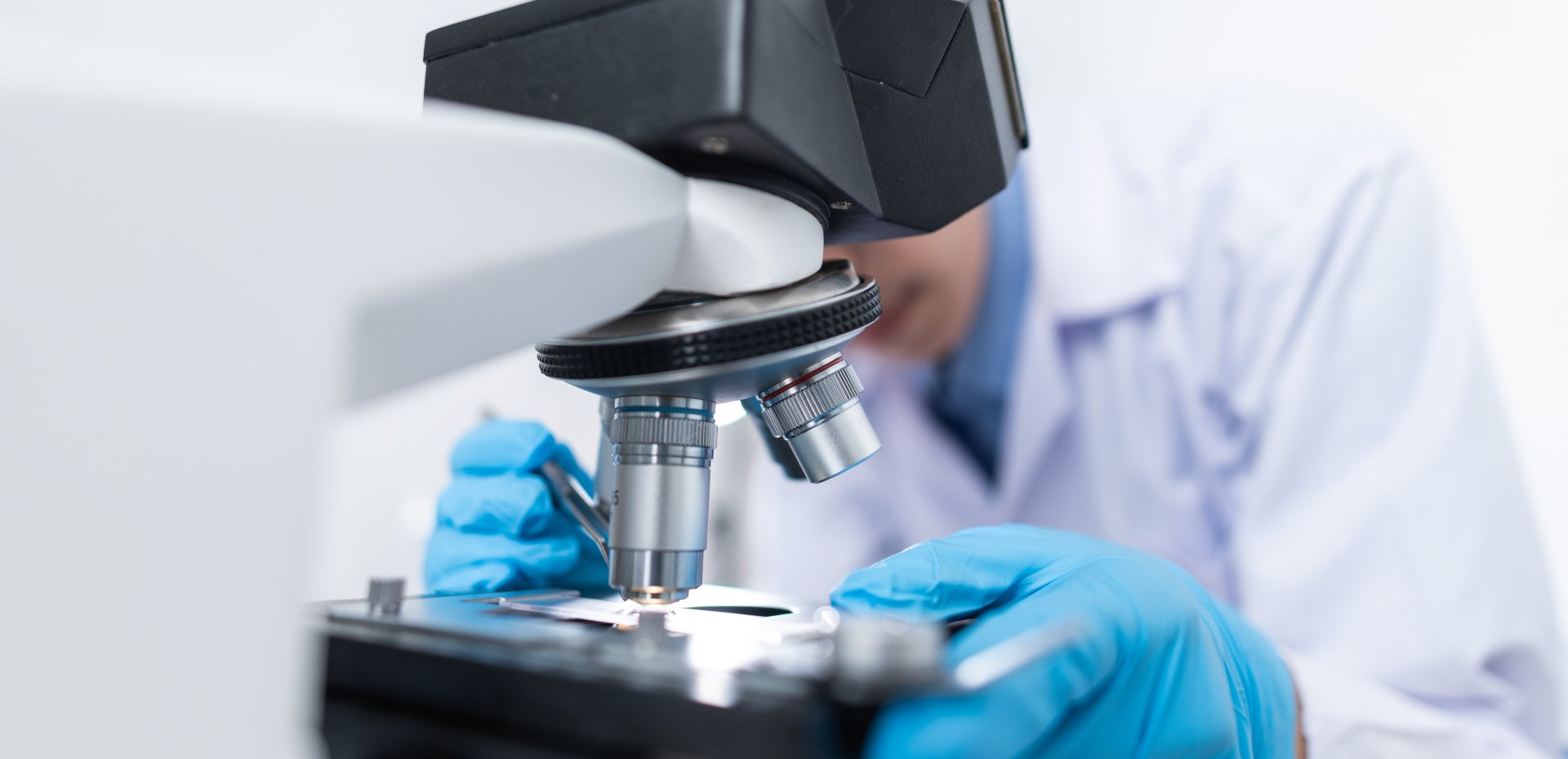How ADME Studies Contribute To Drug Development
Production facilities and regulators in the medical industry know that drug testing needs to go beyond just effectiveness. To protect the health and well-being of customers in this space, businesses have had to withdraw pharmaceuticals from the market for toxicity concerns or unexpected drug interactions.

Medicine is a complicated field, and even a seemingly precise treatment can have unexpected side effects that make the product not worth the risk. ADME studies aim to integrate this testing directly into the discovery and development process. What is ADME, and how does it relate to similarly vital studies like toxicology, drug metabolism, and pharmacokinetics?
An Overview of Pharmacokinetics and Drug Metabolism
Before we dive into ADME, we need to cover the relationship between ADME and DMPK. These related studies in Drug Metabolism (DM) and Pharmacokinetics (PK) help medical research companies determine which drug candidates are worthy of further investigation.
Drug metabolism looks at how the body processes drugs into other compounds, primarily in the liver with drug-modifying enzymes (DME). These studies are particularly interested in whether the final products are potentially toxic.
What is a PK study? Pharmacokinetics measures how much of the drug is present throughout all parts of the body over time. PK gives deeper insight into how the pharmaceutical affects the patient and provides a benchmark to determine optimal dosage.
Understanding the Requirements For ADME, PK/TK, and DM Studies
So what Is ADME in pharmacology? ADME is a medical acronym that covers several essential parameters drug companies analyze during pharmaceutical development. You might hear of it as ADMET, which adds another critical step, toxicology.
- Absorption determines how quickly and efficiently the body can move the drug from the administration area into the bloodstream. The technical term is bioavailability. Absorption depends on the drug’s properties, including molecule size, ionization, solubility, and concentration.
- Distribution is the rate and extent the human body can distribute a single dose of drug around the body. In addition to the bloodstream, pharmaceuticals often pass through body tissues to reach the target site.
- Metabolism involves the mechanism the body uses to process the drug. As the medicine passes through bodily organs, metabolic enzymes break down the agent accordingly. This aspect looks at the final products of drug metabolism and determines whether they’re toxic.
- Elimination occurs after the drug has performed its purpose. Organs like the lungs and kidneys remove the substance through sweat, saliva, excrement, and various other methods also called elimination pathways.
- Toxicology studies the potentially toxic effects on organs and other bodily systems. Toxicokinetics (TK) compares the expected level of toxicity with the amount of exposure to a specific drug.
Why Are ADME Studies Vital To Drug Development?
Because of how important ADME studies are to drug safety, these processes often occur early in the discovery process and are essential for regulatory approval. For instance, a drug candidate must pass these tests to continue on to later clinical programs.
ADME and pharmacokinetic studies will be necessary whenever a company wants to file for an Investigational New Drug (IND), New Drug Application (NDA), or a Biologics Licensing Application (BLA) from the FDA.
While FDA guidelines allow both in vitro and in vivo testing for ADME studies, only the latter method can evaluate pharmacokinetic properties. The FDA produces various guidelines to help the industry verify drug safety and efficacy. A few examples include:
- Safety Testing of Drug Metabolites
- In Vitro Metabolism and Transporter-Mediated Drug-Drug Interactions Studies
- Clinical Drug Interaction Studies
- General Good Laboratory Practices for Nonclinical Laboratory Studies
Some testing conducted under the supervision of the Association of Assessment and Accreditation of Laboratory Animal Care (AAALAC) involves laboratory animals like rodents. If more detailed PK data is necessary, primates may be the test subjects for bioavailability, distribution, and exposure studies.
Stay Up to Date with CfPIE’s ADME Training Course
ADMET and PK studies play major roles in drug discovery and production, verifying exactly how the human body absorbs, processes, and excretes drug compounds. Therefore, companies must pay attention to these studies to choose suitable research candidates for testing and to verify compliance with FDA guidelines.
Whether you’re a team leader, you’re involved in preclinical studies, drug development process, or a clinical researcher, learning more about these vital studies is paramount to your success in future pharmaceutical development.
Are you looking to improve your knowledge of ADME, PK/TK, and drug metabolism? We recommend registering for:
Have questions about our courses? Get in touch with our team today.
Blog Categories
Stay Informed
Have Questions?
You will be able to find answers to most frequently asked questions here
Since 2001 CfPIE has
Check Out Our Life Science Training Courses.
Need help finding the right life sciences training courses? We can help you make the right choice based on your company's needs.
- AMDE, PK/TK & Drug Metabolism in Drug Discovery and Development
- Advanced Topics in Biostatistics for Non-Statisticians
- Analytical Chemistry Principles for Pharmaceutical Scientists
- Analytical Method Validation for Biologics, Biopharmaceuticals and Other Therapeutic Products
- Aseptic Processing in the Manufacture of Biotech and Pharmaceutical Products
- Auditing and Qualifying Suppliers and Vendors
- Best Practices for an Effective Cleaning Validation Program
- Biostatistics for Non-Statisticians
- CMC Regulatory Compliance Strategy for Cell & Gene Therapy Medicines
- CMC Regulatory Compliance Strategy for Recombinant Proteins, Monoclonal Antibodies, & Biosimilars
- Cell and Gene Therapy Product Lifecycle - Introduction Course - Gene Editing, CRISPR/Cas, TALEN Technologies
- Change Control - GMP Requirements and FDA Enforcement
- Cleanroom Fundamentals - Regulation, Science, Design, Practice, Operation & Management
- Clinical Document Management: A Trial-by-Trial Compliance Approach
- Clinical Trial Project Management, Phase 1-4 Best Practices
- Comprehensive Overview of FDA Regulatory Compliance for Drug and Biotech Products
- Computer System Validation
- CRO, CDMO and Non-Clinical Vendor Management Fundamentals
- Development and Validation of Bioanalytical Assays for Biologics: Quantification (PK) and Immunogenicity Assays
- Effective Document Management for Pharma, Biotech & Medical Device
- Effective Internal and External Quality Assurance Auditing for FDA Regulated Industries
- Ethics in Research - Values for Responsible Conduct of Research
- European Regulatory Procedures - EMA & National Requirements
- FDA Inspections - What Regulators Expect and How to Prepare
- GCP Audits - Best Practices for Ensuring Compliance & Detecting Fraud and Misconduct in Clinical Trials
- GMP Training for the QC Laboratory
- Good Clinical Practices (GCP) & Risk Based Monitoring - Understanding and Implementing Current Global Requirements
- Good Laboratory Practice (GLP) for Nonclinical Laboratory Studies
- Good Manufacturing Practices Training | GMP Course
- Human Error Prevention (HEP) - Risk Factors and Strategies
- Implementing and FDA Compliant Stability Program
- Integration of Risk Management Principles and Activities into the Pharmaceutical Quality System
- Intro to Medical Device Submission - 510(s)s, PMAs & Exemptions
- Introduction to Medical Combination Products
- Introduction to Statistical Analysis of Laboratory Data
- Introduction to Vaccines - CMC Regulatory and Quality Aspects
- Laboratory Equipment Validation and Qualification
- Lyophilization Technology - Application of Scientific Principles
- Marketing & Advertising of Pharmaceutical & Medical Devices
- Medical Device Process Validation Training for Professionals
- Medical Devices: Developing Effective Post Market Surveillance and Compliant Handling Systems
- Molecular Biology Techniques - Applications in the Biotechnology and Pharmaceutical Industries
- OTC Drug and Personal Care Product GMP & FDA Regulation
- Oncology Drug Development Course - A Comprehensive Overview
- Overview of FDA Regulatory Compliance for Medical Devices
- Overview of the New EU Medical Devices Regulations: MDR, IVDR, CE Mark and Compliance, QMS Fundamentals
- Pharmaceutical Root Cause Analysis of Failures & Deviations - Developing an Effective CAPA Strategy
- Preparation of FDA Submissions and Communicating with the FDA
- Preparing the CMC Section for NDAs/INDs/CTDs
- Process Validation for Drugs and Biologics
- QbD - Product & Process Optimization using Design of Experiments
- Quality Assurance/Quality Control for Biologics and Biopharmaceuticals
- RNA Biotechnology - An Introductory Course
- Specifications for APIs & Pharmaceutical Drug Products
- Technical Writing for Pharma, Biotech and Med Devices
- The Drug Development Process from Concept to Market
- US Medical Device & Quality Systems Regulations - Design Controls & Validation
- Writing Effective SOP and Other Process Documents
ABOUT US
The Center for Professional Innovation and Education (CfPIE) provides technical training for Pharmaceutical, Biotech, Medical Device and Skin/Cosmetics professionals. CfPIE offers more than 350 class sessions annually across 80 course titles in multiple formats, such as classroom, on-site, and certification programs.
USEFUL LINKS
STAY INFORMED
Your privacy and trust are important to us. We collect your information only for operational and advisory purposes. We do not and will not sell your private information to a 3rd party. By agreeing to this policy, you are giving us permission to contact you about our services and courses.
All Rights Reserved | CfPIE Inc. | Our courses and materials are copyrighted by CfPIE, Inc. and may not be used or reproduced without the written permission of CfPIE, Inc. management. | In partnership with CCC


